
Indian gharial (Gavialis gangeticus), Kateraniaghat Wildlife Sanctuary, Uttar Pradesh, India.
Crocodiles part 10: Gharials
Indian gharial is the weirdest of all crocodilians. It is apparently a sole descendant of an ancient marine lineage. Unlike all other extant species, this highly aquatic giant can't walk on land - only crawl.

Gharial, Madras Crocodile Bank, Tamil Nadu, India. |
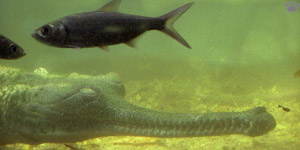
Gharial underwater, MCB, India. |
These fast swimmer is a highly specialized fish-eater, but it would take other small prey, too. |

Gharial, KWS, India. |
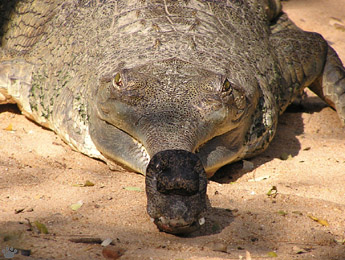 |
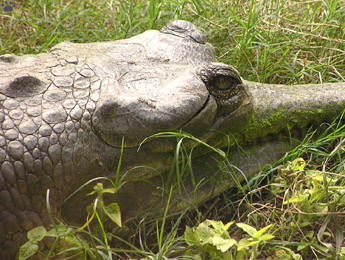 |
| Gharials, MCB, India. |
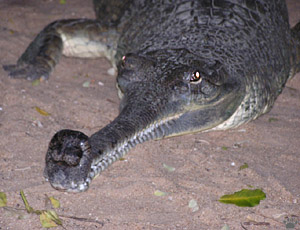
Gharial at night, MCB, India. |
Gharials are extremely difficult to approach, but hunting, habitat loss and accidental deaths in fishing nets brought them to the brink of extinction. |
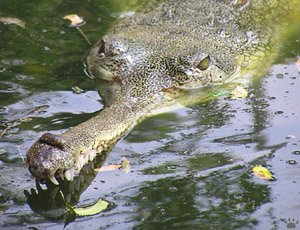
Gharial, MCB, India. |

Gharial habitat, KWS, India. |
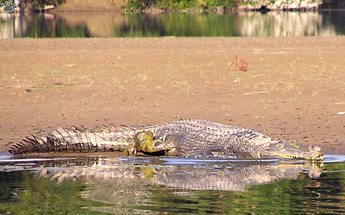
Gharial escaping danger, KWS, India. |

Gharial, Corbett National Park, Uttarkhand, India. |
Once common in large rivers from Pakistan to Myanmar, Indian gharial has declined to just three tiny breeding populations in northern India. Decades of captive breeding programs once helped avoid total extinction, but now the situation is again critical. |

Gharial, Chambal Wildlife Sanctuary, Uttar Pradesh, India. |
 |
 |
| Gharials, KWS, India. |
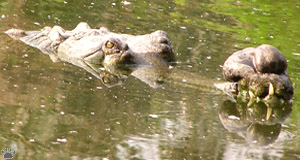
Adult male gharial, Nandankanan Zoo, Orissa, India. |
The word gharial (from Indian ghara, "cooking pot") refers to the strange organ on the snouts of adult males. |
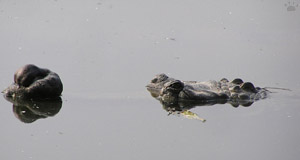
Adult male gharial, KWS, India. |

Raised-snout posture, KWS, India. |
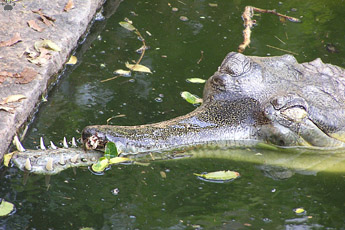
Victim of a fight between males, MCB, India. |
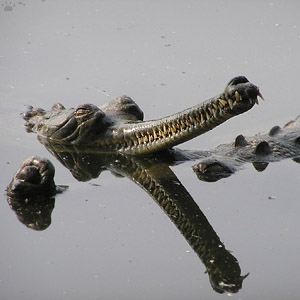
Gharials in love. Like most crocodilians, they are romantic and tender
lovers, and often spend many hours in quiet foreplay. KWS, India. |
During the mating season, males fight, patrol their territories, woo females with buzzing songs and loud popping sounds, and pose with raised snouts (gharas seem to serve as territorial markers). |
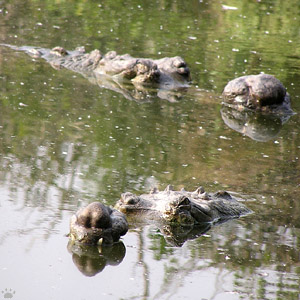
Gharial males are fiercely territorial in the wild, but sometimes they
peacefully live together in captivity. Nandankanan Zoo, India. |
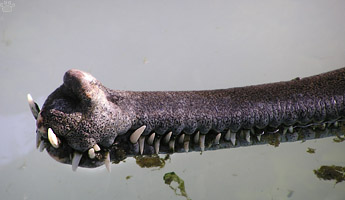
Ghara of a young male, St. Augustine Alligator Farm Zoological Park, Florida. |

Gharial head, SAAFZP, Florida. |

Gharial on land, SAAFZP, Florida. |
The weird skull shape of gharials probably has something to do with sound
production or infrasound hearing. |
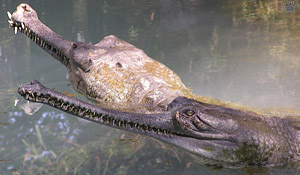
Gharial courtship, SAAFZP, Florida. |
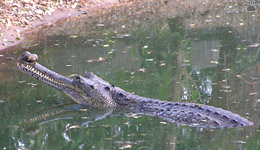
Male singing the buzzing song to females onshore. MCB, India. |
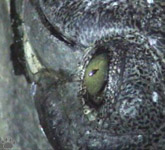
Gharial eye, MCB, India. |

Male patrolling his territory, KWS, India. |
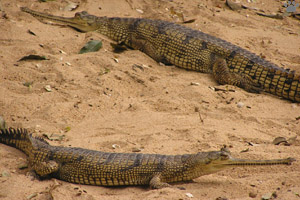 |
Gharials nest in holes dug in the muddy banks. Their eggs are the largest of of crocodilian species - 160 grams on average. |
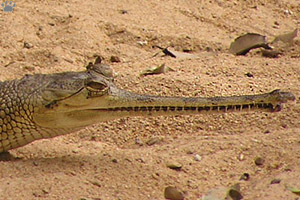 |

Gharials, MCB, India. |
Females don't carry hatchlings to the water (their jaws are not cut for this job), but they protect their offspring for months. |

Juvenile gharials, MCB, India. |
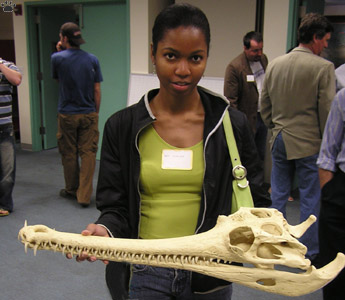
Skull of a false gharial (Tomistoma schlegeli). Note fishhook-like teeth.
Miami Metrozoo, Florida. |
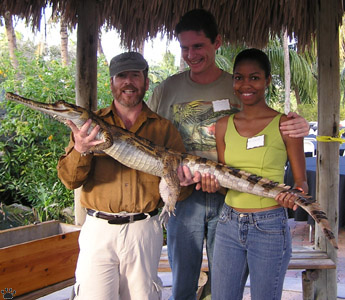
Bruce Shwedick (of Tomistoma Task Force) with a juvenile false gharial
during Tomistoma Conservation Benefit dinner at Miami Metrozoo. |
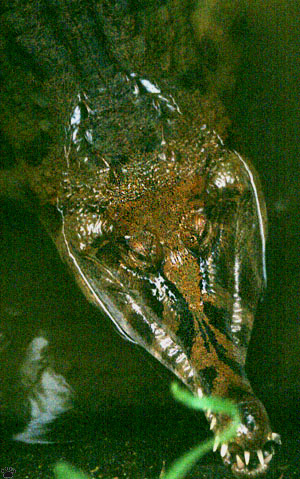
False gharial, Zoo Negara, Kuala Lumpur, Malaysia. |
False gharial is very little known. It inhabits rainforest rivers of Sumatra, Kalimantan and Malaysia. It's very rare and almost impossible to see in the wild. |
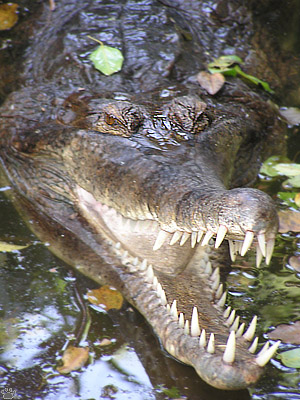
False gharial, MCB, India. |

False gharial habitat, Tajung Puting National Park, Kalimantan, Indonesia. |

False gharial habitat, TPNP, Indonesia. |
I spent a week searching for them on Kalimantan, and managed to see one beautiful baby (for a few seconds) and one large adult (for about ten minutes, but from far away). They are extremely secretive and almost strictly nocturnal, probably because of hunting pressure. |

Baby false gharial, TPNP (image enhanced in Adobe Photoshop). |
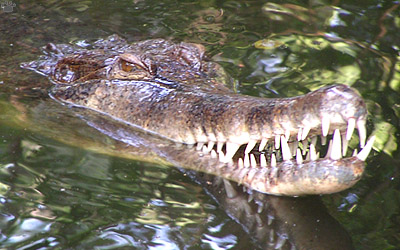
False gharial, MCB, India. |
Part 11: Dwarf and slender-snouted crocodiles
Back to Part 9
Home
|